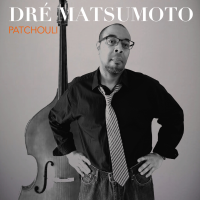Home » Jazz Articles » Live Review » Wallace Roney Sextet at the Green Mill
Wallace Roney Sextet at the Green Mill
Green Mill, Chicago
August 27, 2005
On the second night of a two-day stand at Chicago's Green Mill, trumpeter Wallace Roney blended acoustic post-bop and electronic groove over three deeply satisfying sets. It's not as if this sort of stylistic synthesis is unheard of these days, but it was notable on just how successful Roney's synthesis has become. Roney was accompanied by his sextet of brother Antoine Roney on tenor and soprano sax, Clarence Seay on acoustic bass, Eric Allen on drums, Robert Irving III on acoustic piano and Yamaha Motif synth, and DJ Val Jeanty on turntables. The group was profoundly tight, attuned and, on this Saturday gig, noticeably listening—no one was content to merely play changes on the more boppish tunes nor did anyone lose concentration on the long groove numbers. This was a band that reached for, and attained, some lofty musical heights.

Roney's had a long, hard road trying to overcome the somewhat glib "Miles Davis clone criticisms that have followed his every recorded move. Older CDs like 1996's Village or 2000's No Room For Argument were showered with critical comparisons to Miles' Nefertiti or Filles de Kilimanjaro, and while Miles is certainly an undeniable stylistic point of reference, so is Booker Little, or Freddie Hubbard, or, for that matter, Herbie Hancock's Mwandishi band (who come most readily to mind upon hearing Roney's excellent 2004 Prototype CD). What Roney has become is an accomplished sum of his influences—and truly, there isn't a musician working an electric-keyboard-laced groove who doesn't owe something to Miles Davis. For that matter, there isn't a jazz trumpeter who doesn't owe a portion of his licks to Louis Armstrong, so let's move on. The Green Mill sets showcase a trumpeter and band alternating between the searing hard bop of "Metropolis and the snaky, deliberate electric groove of "Cyberspace ; the audience heard a trumpeter burning through the straight rapidfire bop lines of "Then and Now and the sweet, melodic lyricism of "Christina. This is an artist that should be viewed as his own man.
The above description might suggest the sets had a schizophrenic nature, but this band blended styles into a powerful, almost intimidating whole. Turntablist Jeanty's scratching seemed lost and inessential on "Metropolis as she struggled to find a place for her turntable accents in Antoine and Wallace Roney's fine solos (the saxophonist ripping on tenor through a tricky nine-count staccato section), but this was the only tune of the evening where she seemed even remotely out of place. Her slashing turntable cuts were integral to the deep-groove "Shadowdance, responding to Antoine Roney's Pharoah Sanders-ish low-register solo like, well, a jazz musician. Her rapport with Irving was especially keen; the only word for her scratched accompaniment to Irving's Wurlitzer-like (the Yamaha Motif can sound, really, like anything) solo would be "comping. Irving did the work of two keyboardists throughout, playing a magnificent Clavinet-style break on "Cyberspace and a block-chord-packed solo on "Then and Now that rivalled the leader's multisyllabic trumpet lines or Antoine Roney's searing across-the-beat phrasing for sheer excitement and impact. On "Quadrant 329-4-526, Irving played both instruments, making this group the sonic equivalent of a septet.
Throughout it all, Allen's kit work was utterly propulsive and alert, whether he was working the static, unwavering groove of "Quadrant 329-4-526 or pounding out Art Blakey-styled hard bop bombs on "Then and Now. Seay managed to remain noticeable even on the dense and bottomless groove of "NuBeings —which transitioned so seamlessly out of "Northern Lights that I felt compelled to ask Antoine Roney after the set if they always played the two songs together. "No, that's just listening, he told me.
Let's not forget to mention the band's leader, who's playing at a very high level these days. Roney coupled deep reservoirs of winsome emotion and sharp, taut articulation on a cover of the Al Green classic "Let's Stay Together. His trumpet lines rode the funky 6/8 groove of "Shadowdance majestically as he played intricate, chromatic runs that were multicolored and thematically fascinating.
No single night of performance can eliminate the years of critical disparagement Roney's endured for the crime of being influenced by perhaps the most influential musician of the previous century. But the crowds at the Green Mill Saturday night were elated, excited and buzzing—and during the set breaks I didn't hear a single person use the "M word. No dearth of the word "Wallace," however.
Photo Credit
Mark Sheldon
Tags
PREVIOUS / NEXT
Support All About Jazz
 All About Jazz has been a pillar of jazz since 1995, championing it as an art form and, more importantly, supporting the musicians who make it. Our enduring commitment has made "AAJ" one of the most culturally important websites of its kind, read by hundreds of thousands of fans, musicians and industry figures every month.
All About Jazz has been a pillar of jazz since 1995, championing it as an art form and, more importantly, supporting the musicians who make it. Our enduring commitment has made "AAJ" one of the most culturally important websites of its kind, read by hundreds of thousands of fans, musicians and industry figures every month.
























